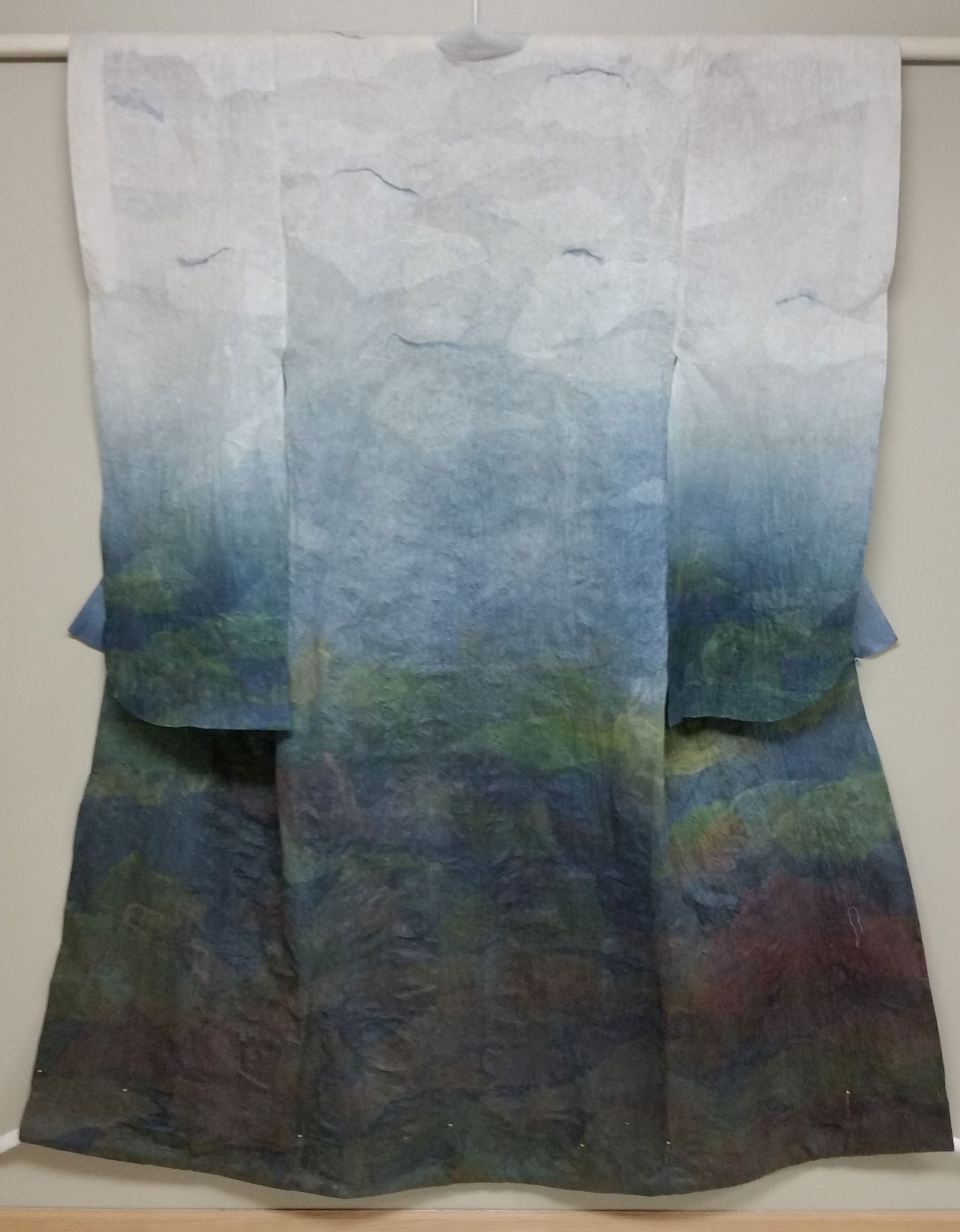Bio:
Julie McLaughlin (b. 1953) is a Coralville, Iowa based artist who has been making paper and exploring its sculptural possibilities since the early 90’s. Her passion for pushing the boundaries between paper and textiles has grown from sculptural work based on the corseted silhouette to wearable paper garments using large (6’x9’) sheets of paper made with Kozo fiber. Currently she is using the shape of the kimono as her matrix for both sculptural and wearable art. Her work is shown both nationally and internationally. Her most recent exhibitions include solo shows at the Keokuk Art Center, Keokuk, IA and Central College in Pella, Iowa. She was also part of a group exhibition at the Morgan Art of Papermaking Conservatory and Educational Foundation, Cleveland Ohio and Fiber Artists of Iowa exhibition held at the Faulconer Gallery, Grinnell College, Grinnell, IA, (in conjunction with the Midwest Weavers’ Conference). In 2020 she will also be part of the group exhibition, The Many Faces of Paper (working title) at the Ohio Craft Museum in Columbus Ohio.
Contact:
Artist Statement:
I have considered myself a papermaker for several decades now, but I rarely leave the sheets I make in a two-dimensional form. As my degree is in printmaking one can rightly assume that this was quite frustrating for me early on. Once I discovered the sculptural potential of handmade paper and discounted the notion that it was fragile and weak my artistic world expanded in a wondrous way. I spent many years working as a costume designer in a professional theatre where designs came from the collaboration of the production team. I now feel I collaborate with the fiber and the papers made from these fibers as I work on each piece. The sheets I make are all made from Kozo which is the inner bark of the paper mulberry tree. These sheets are thin, yet strong and fluid, much like a woven textile. Interesting surface textures are created using various dye, felting, drying and stitching techniques. The conversations I have with the paper during these processes provide the impetus for my work.
The kimono has proven to be a perfect vehicle to show all the personalities of my handmade papers. I am drawn not only to the simplicity of the kimono silhouette but also to the complexity of the traditions surrounding it. I enjoy the dialogue I have with the paper as I am working with each sheet (whether wet or dry) and how it connects with a structural form. I oftentimes create background stories relating to a piece as I am working, but I expect viewers to create their own stories as they connect with or interpret my work.

